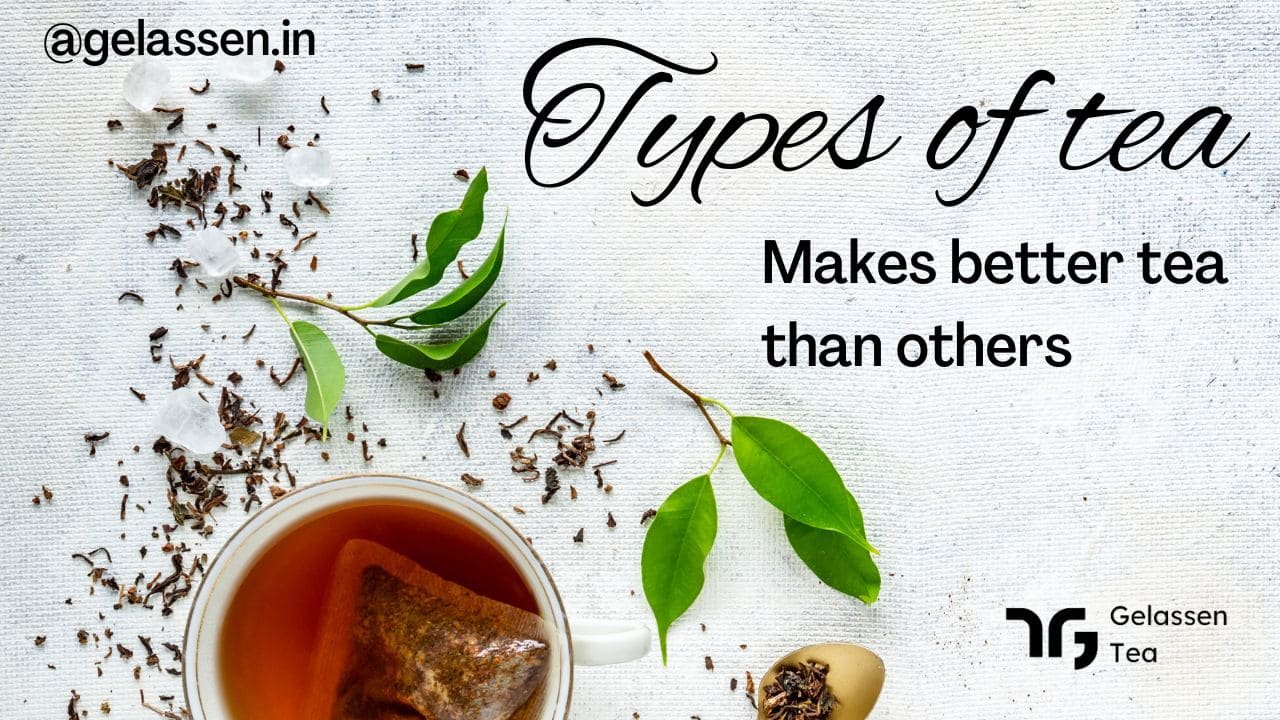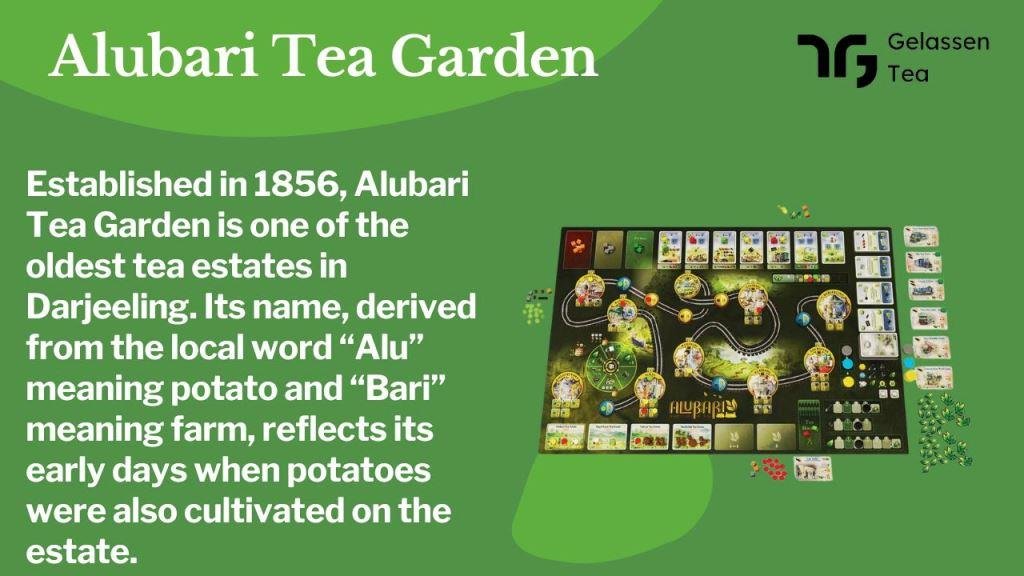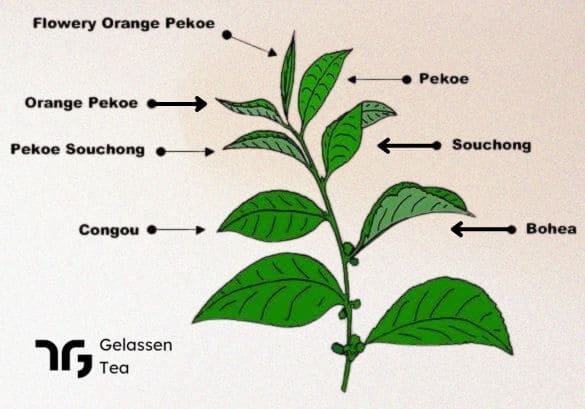Different Types of Tea: A Guide for Tea Lovers 🍵
What are True Teas?
- True teas are teas that are made from the leaves of the Camellia sinensis plant, also known as the tea plant.
- There are six main categories of true teas, often referred to as tea types: green, yellow, white, oolong, black, and pu-erh.
- The difference between these tea types is in the cultivar and how the tea is processed or manufactured.
- All true teas contain caffeine, but the amount varies depending on the type of tea, the brewing method, and the steeping time.
- All true teas also have antioxidants, catechins, and polyphenols that can have various health benefits, such as boosting metabolism, improving digestion, enhancing mood, and protecting against diseases.
Different Types of Teas
- Let’s take a closer look at the six types of true teas and their characteristics:
Different types of Tea
Green Tea
- Green tea is one of the most popular and widely consumed teas in the world.
- Green tea is made by steaming or pan-firing the fresh tea leaves to prevent oxidation, and then drying them.
- Green tea has a light green color and a grassy or vegetal flavor.
- Green tea has a low to moderate amount of caffeine, ranging from 15 to 45 mg per cup.
- Green tea is rich in EGCG, a powerful antioxidant that can help prevent cancer, lower cholesterol, and improve brain function.
Yellow Tea
- Yellow tea is a rare and expensive type of tea that is mainly produced in China
- Yellow tea is made by withering and oxidizing the tea leaves, and then wrapping them in a cloth or paper to allow them to yellow
- Yellow tea has a pale yellow color and a smooth and sweet flavor
- Yellow tea has a low amount of caffeine, similar to green tea
- Yellow tea has a high concentration of theanine, an amino acid that can promote relaxation, reduce stress, and improve sleep quality
White Tea
- White tea is the least processed and most delicate type of tea
- White tea is made by plucking the young buds and leaves of the tea plant, and then drying them naturally in the sun or with minimal heat
- White tea has a silvery white color and a mild and floral flavor
- White tea has the lowest amount of caffeine among the true teas, ranging from 6 to 25 mg per cup
- White tea has the highest amount of antioxidants among the true teas, as it is the least oxidized and most preserved
Oolong Tea
- Oolong tea is a semi-oxidized type of tea that has a wide range of flavors and aromas
- Oolong tea is made by withering, bruising, and partially oxidizing the tea leaves, and then roasting them to stop the oxidation
- Oolong tea has a brownish color and a fruity, floral, or woody flavor, depending on the degree of oxidation and roasting.
- Oolong tea has a moderate amount of caffeine, ranging from 30 to 50 mg per cup.
- Oolong tea has a high content of polyphenols, which can help lower blood sugar, reduce inflammation, and prevent obesity.
Black Tea
- Black tea is the most oxidized and most consumed type of tea in the world.
- Black tea is made by withering, rolling, and fully oxidizing the tea leaves, and then drying them
- Black tea has a dark brown or reddish color and a strong and malty flavor.
- Black tea has the highest amount of caffeine among the true teas, ranging from 40 to 70 mg per cup.
- Black tea has a high content of theaflavins and thearubigins, which are antioxidants that can help lower blood pressure, improve blood vessel function, and protect against cardiovascular diseases.
Pu-erh Tea
- Pu-erh tea is a fermented and aged type of tea that originates from the Yunnan province of China.
- Pu-erh tea is made by withering, rolling, and oxidizing the tea leaves, and then compressing them into cakes or bricks, and storing them in a humid environment for months or years.
- Pu-erh tea has a dark brown or black color and an earthy and musty flavor.
- Pu-erh tea has a high amount of caffeine, similar to black tea.
- Pu-erh tea has a high content of lovastatin, a compound that can help lower cholesterol, and gallic acid, a compound that can help prevent cancer.
What are Herbal Teas?
- Herbal teas are teas that are made from various plants, herbs, spices, fruits, or flowers, other than the Camellia sinensis plant.
- Herbal teas are also known as tisanes or infusions, and they are not technically true teas.
- Herbal teas have a wide variety of colors and flavors, depending on the ingredients used.
- Most herbal teas are caffeine-free, except for those that contain mate, guarana, or other caffeinated plants.
- Herbal teas have various health benefits, depending on the ingredients used, such as soothing the throat, relieving stress, boosting immunity, and detoxifying the body.
Types of Herbal Teas
- There are hundreds of types of herbal teas, each with its own characteristics and benefits. Here are some of the most popular ones:
Chamomile Tea
- Chamomile tea is one of the most widely consumed herbal teas in the world.
- Chamomile tea is made by steeping the dried flowers of the chamomile plant in hot water..
- Chamomile tea has a light yellow color and a sweet and floral flavor.
- Chamomile tea is caffeine-free and has a calming effect on the
Here are some more types of herbal teas:
Peppermint Tea
- Peppermint tea is a refreshing and invigorating herbal tea that is popular around the world .
- Peppermint tea is made by steeping the dried leaves of the peppermint plant in hot water .
- Peppermint tea has a bright green color and a cool and minty flavor .
- Peppermint tea is caffeine-free and has a stimulating effect on the mind and body .
- Peppermint tea has many health benefits, such as relieving nausea, improving digestion, fighting bad breath, and easing headaches .
Ginger Tea
- Ginger tea is a spicy and warming herbal tea that is widely used in traditional medicine .
- Ginger tea is made by boiling or infusing the fresh or dried root of the ginger plant in hot water .
- Ginger tea has a golden yellow color and a hot and pungent flavor .
- Ginger tea is caffeine-free and has a thermogenic effect on the body, meaning it can increase the body’s temperature and metabolism .
- Ginger tea has many health benefits, such as boosting immunity, fighting infections, reducing inflammation, and soothing sore throat .
Hibiscus Tea
- Hibiscus tea is a fruity and tangy herbal tea that is popular in tropical and subtropical regions .
- Hibiscus tea is made by steeping the dried flowers of the hibiscus plant in hot water .
- Hibiscus tea has a deep red color and a sour and cranberry-like flavor .
- Hibiscus tea is caffeine-free and has a cooling effect on the body, meaning it can lower the body’s temperature and blood pressure .
- Hibiscus tea has many health benefits, such as lowering cholesterol, protecting the liver, preventing kidney stones, and enhancing skin health .
Conclusion
- Different types of tea are a wonderful and diverse beverage that can be enjoyed by anyone who loves tea. They have a rich and complex flavor, a long and storied history, and a variety of benefits and uses. Whether you prefer true teas or herbal teas, you can always find a type of tea that suits your taste and mood. Tea is more than just a drink, it is a culture. 🙌
Hashtags
#tea #tealover #teatime #teablogger #teareview #tealifestyle #teaculture #teabenefits #teatips #tearecipes #truetea #herbaltea #greentea #yellowtea #whitetea #oolongtea #blacktea #puerhtea #chamomiletea #pepperminttea #gingertea #hibiscustea #antioxidants #caffeine #flavor #aroma #health #wellness #relaxation








Leave a Reply